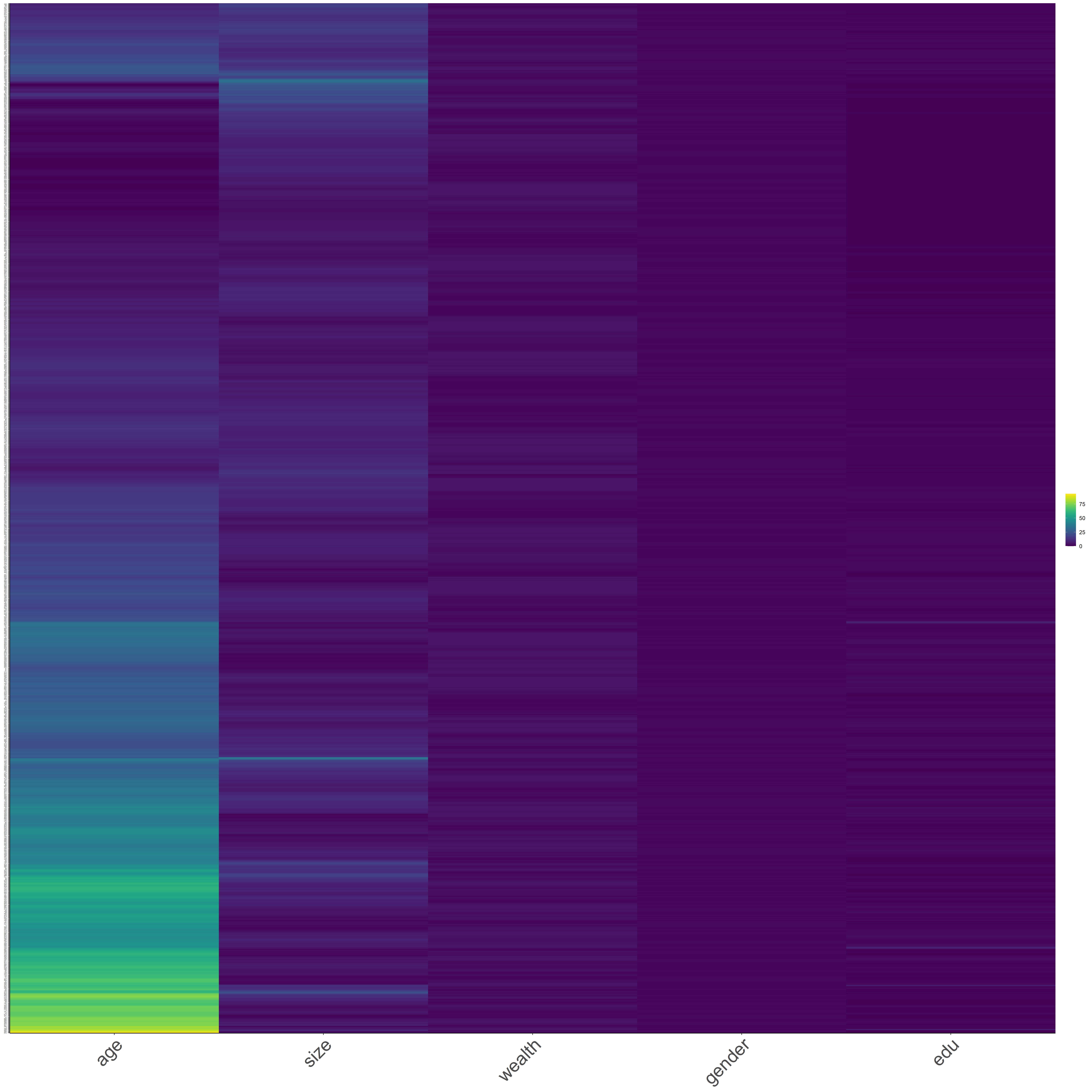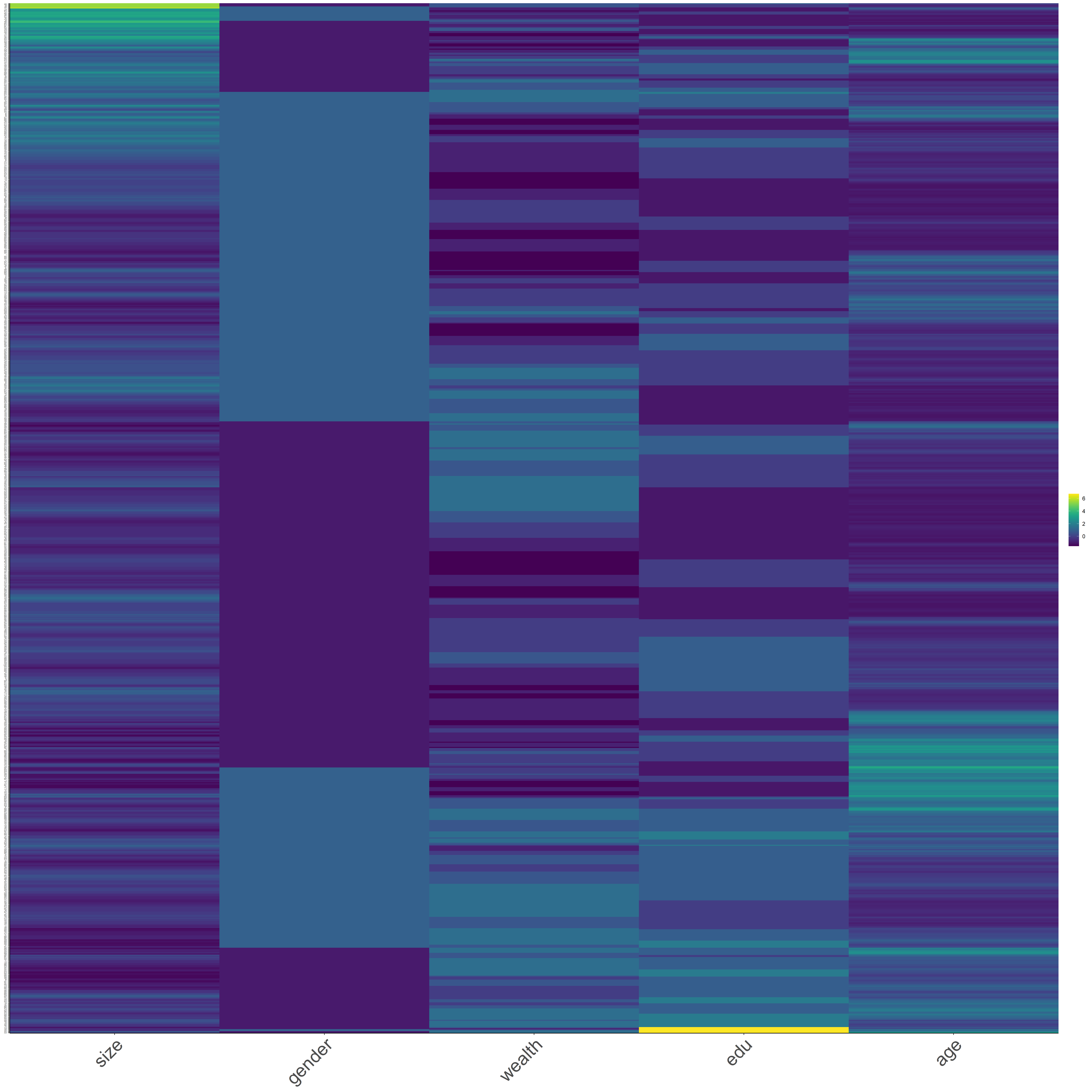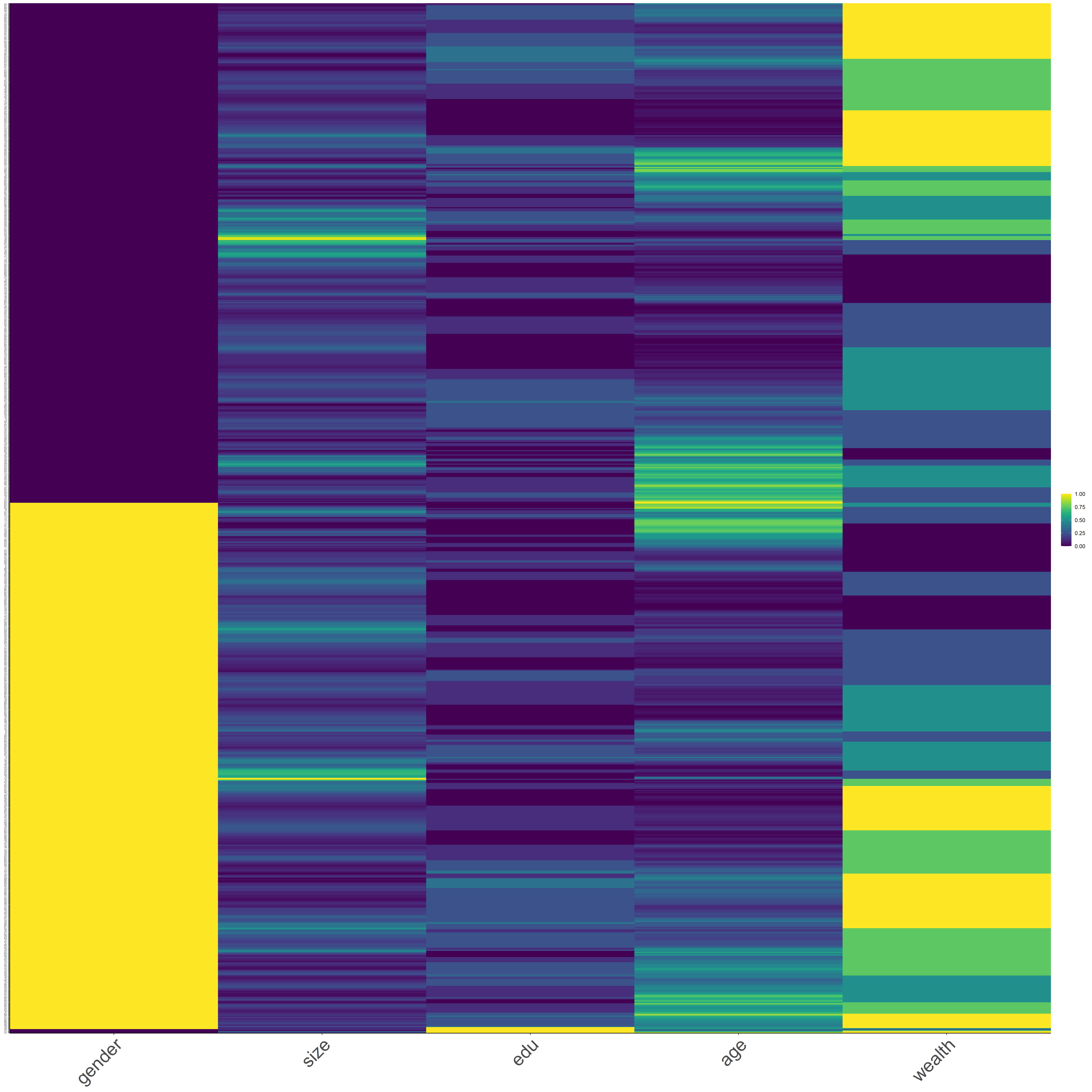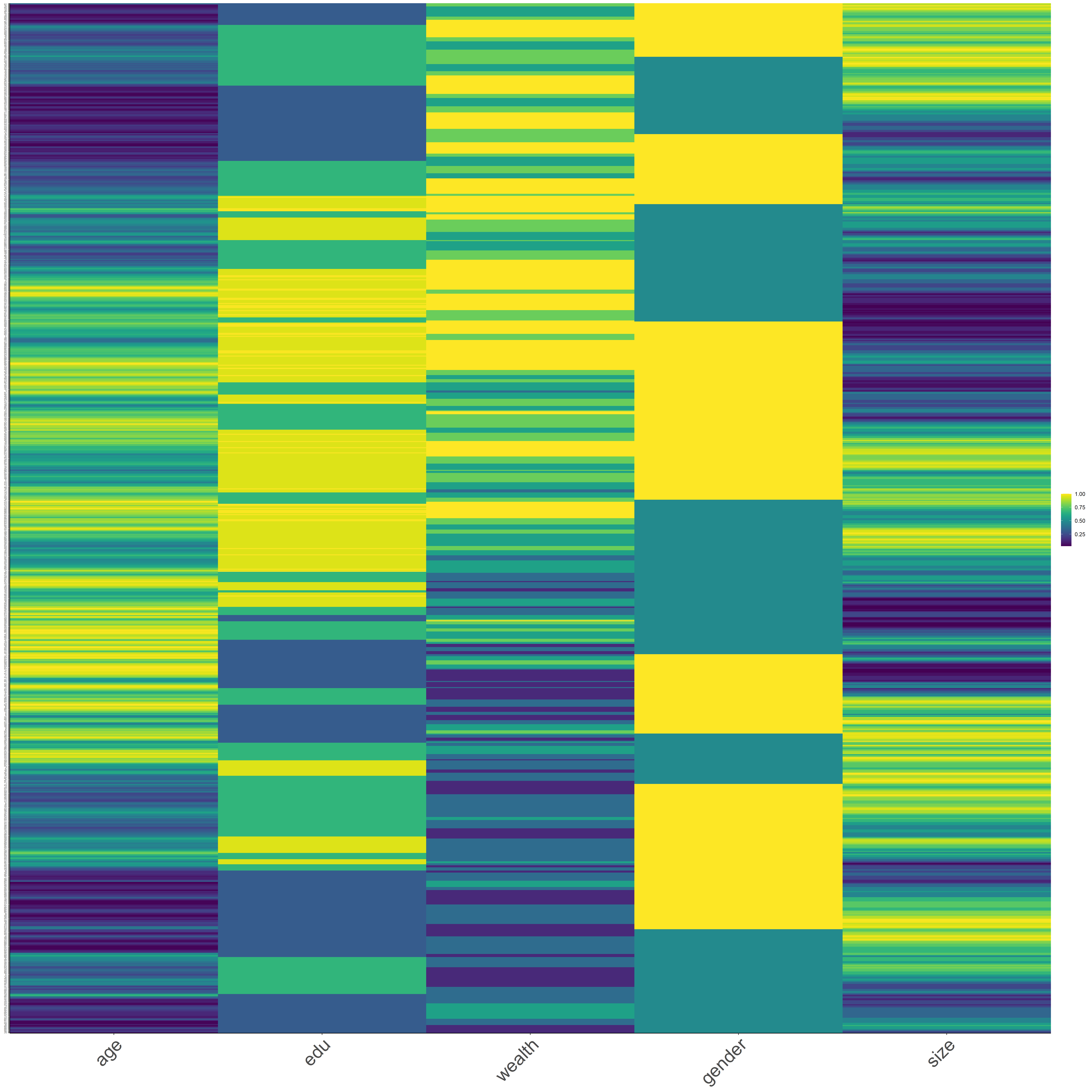Response 5
- Import the households dataset for your selected country and create a data frame with a variable that describes each of the following:
- household ID /n unit
- weights
- location
- size
- gender
- age
- education
- wealth
- Pivot the persons columns within your households data to a long format in order to produce a similarly specified dataset that describes all persons residing within all households.
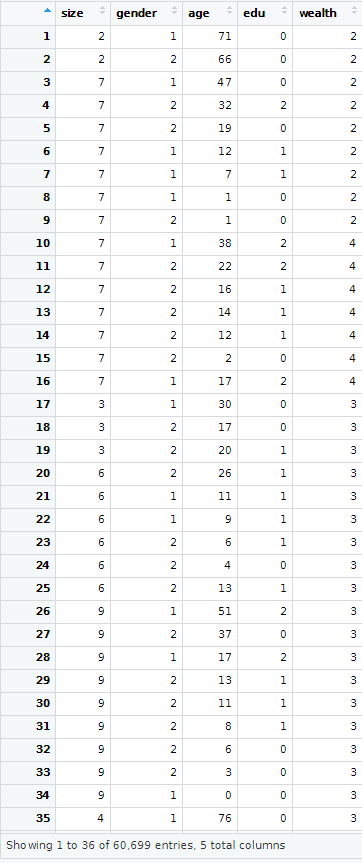
- Using this data frame describing all persons standardize, normalize and percentize your variables and visualize each post transformed dataset as a heatmap that illustrates the heterogeneity of the combination of patterns.
